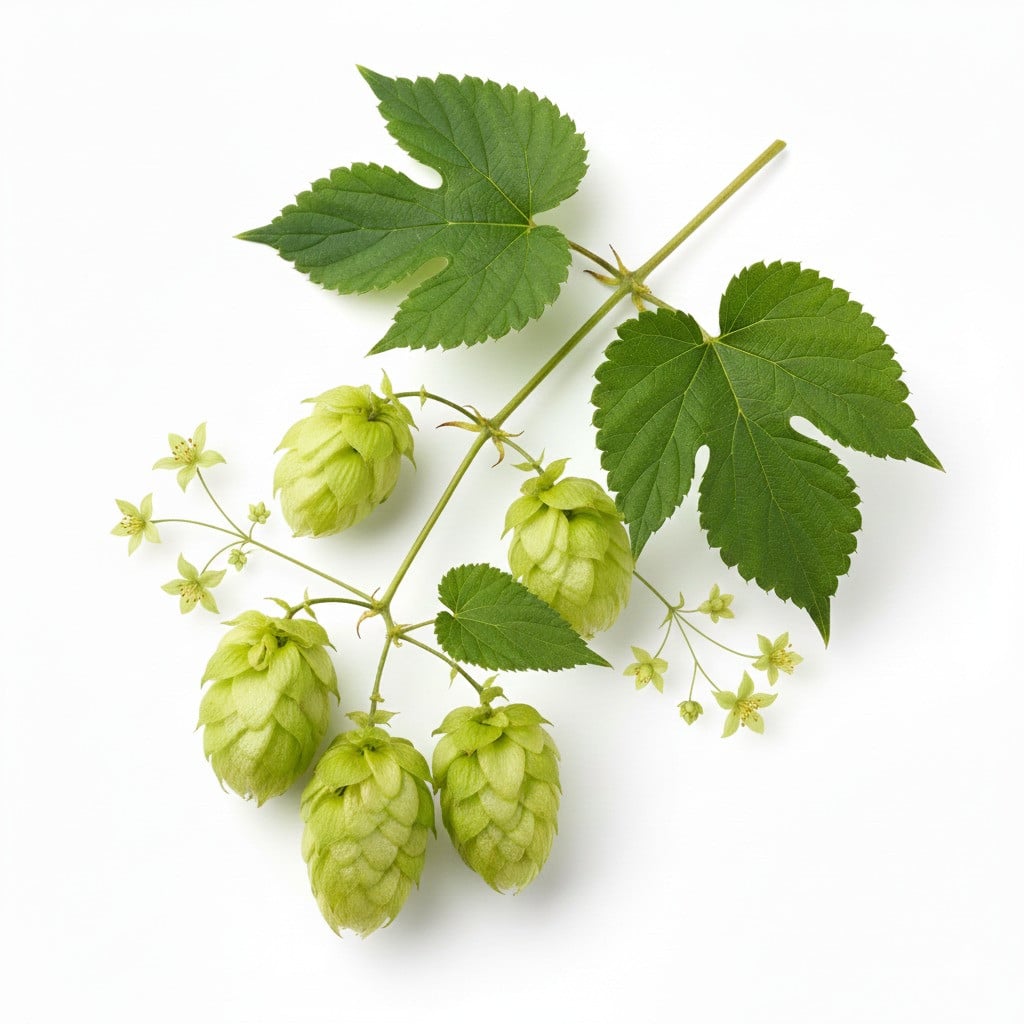Real hops (Humulus lupulus)

Real hops (Humulus lupulus)
Humulus lupulus
Plant family
Hemp family (Cannabaceae)
Season Overview
Propagating
Planting
Harvest
Harvest
J
F
M
A
M
J
J
A
S
O
N
D
1ST YEAR
FOLLOWING YEARS
Details
Germination temperature
20 °C (Degrees Celsius)
Plant distance
150 cm
Row spacing
300 cm
Seeding depth
1 cm
Instructions
Description
The common hop (Humulus lupulus) is a plant species of the hop genus within the hemp family (Cannabaceae). The true hop is a perennial, vigorous, right-twining herbaceous climbing plant (climbing perennial) with climbing shoots. The square, hollow stems are 1 to 3 cm thick and have anchor-like or hook-like "climbing hairs". On average, hops grow between 6 and 8 m tall and up to 2 m wide. The above-ground shoots of the plant are annual and die back after the seeds have ripened. In spring, the deciduous hops sprout again from the perennial thick rootstock (rhizome). The hop is a dioecious plant. The male flower is an inconspicuous greenish-yellow panicle, the small female flower is a light green cone-like spike. The flowering period usually begins in June. After wind pollination, the small nut-like fruits develop. All parts of the plant are edible.
Growing tips
Hops are best planted in the fall or early spring. Hops like well-drained, deep, nitrogen- and nutrient-rich soil. However, as the plant is very adaptable, it can cope with any soil. In spring, hops should be fed with compost and horn meal. The climbing perennial must be watered regularly so that the soil remains moist and does not dry out. A warm, partially shaded location is ideal. However, the plant also thrives in sunny or shady locations. In late winter, cut off the dead parts of the plant. After sprouting, the hops need climbing support. Hops are usually propagated by cuttings or by dividing the rhizome. Hops are very hardy.
Companion Plants
No companion plants
Antagonistic Plants
No antagonistic plants
Diseases
Grey mold
Downy mildew
Powdery mildews
Pests
Flea beetles
Spider mites
Aphids